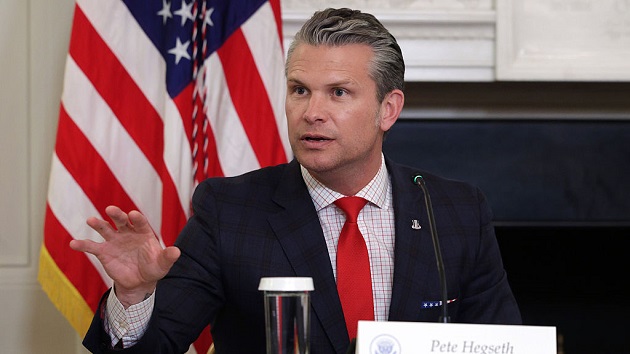How to have a more sustainable Valentine’s Day
Written by ABC Audio ALL RIGHTS RESERVED on February 12, 2024

(NEW YORK) — Show a little love to the planet this Valentine’s Day by celebrating in more sustainable ways.
The holiday is actually quite carbon-intensive due to consumer behavior in the U.S., research shows. For Valentine’s Day, U.S. citizens buy about 36 million heart-shaped boxes, 180 million cards, 198 million roses, 881,000 bottles of sparkling wine and 58 million pounds of chocolate, according to Waste 360, an international waste management and strategy company.
Americans are projected to spend nearly $26 billion on Valentine’s Day this year, the National Retail Federation announced in January.
North America did not embrace Feb. 14 as a holiday en masse until Hallmark began specializing in Valentine’s Day cards in 1910, according to the World Resources Institute (WRI).
Consumers can reduce their carbon footprint by making more eco-friendly choices for their Valentine’s Day revelry.
Here’s how to celebrate Valentine’s Day more sustainably, according to experts:
Buy a houseplant from a local nursery instead of flowers
Unlike a bouquet of fresh-cut flowers, a houseplant can last for years and be enjoyed for many holidays to come.
Purchasing a houseplant from a local nursery can support a local business and avoid additional shipping emissions associated with imported flowers and plants, Jodie Bross, owner of Glenwild Garden Center in Bloomingdale, New Jersey, told ABC News.
More than a billion flowers are imported into the U.S. — mostly from Ecuador and Colombia — according to U.S. Customs and Border Protection.
According to the National Retail Federation, 39% of consumers will buy flowers for the holiday. However, most of them will end up in landfills after the holiday, contributing to the release of methane, one of the most powerful greenhouse gases that is responsible for around 30% of the global temperature increase since the Industrial Revolution, scientists say.
Organic materials, including food waste, are responsible for the majority of fugitive methane emissions from municipal solid waste landfills, according to the Environmental Protection Agency.
In addition, chemical pollution from the cut-flower industry, which uses agrochemical extensively for the short-cycle production, has negative effects on the air, soil and water supply, according to the World Resources Institute. The amount of water used in production is also a concern, the WRI said.
“The sourcing for them can be a little bit problematic,” Bross said. “A lot of them come from South America, so there’s a lot of travel involved.”
Choose experiences over gifts
Valentine’s Day gifts can also be tickets to a Broadway show or concert.
In 2023, an estimated 41% of Americans gave experiences for Valentine’s Day instead of a physical gift, according to the National Retail Federation.
Make your own stuffed heart or toy with old fabrics or clothes you already have. Another idea could be to repurpose wine bottles or candles to create a new soy candle as a gift.
Baking goods or purchasing them from a local bakery also helps to curb emissions from shipping.
Consider celebrating with a green heart instead
While Valentine’s Day is often flooded with the colors red and pink, one nonprofit climate organization is incorporating green into the mix.
U.K.-based The Climate Coalition has embarked on the Show the Love campaign, which calls for urgent and decisive action on climate change, Helen Meech, the organization’s executive director, told ABC News.
“Climate can feel quite intangible,” Meech said. “It can feel quite sort of over there. So it’s about taking it back to people’s everyday lives and the things that they love.”
On Valentine’s Day, communities across the U.K. display green hearts in windows and residents send green hearts to local representatives to encourage environmental action.
“We’ve had kind of people from every corner of the U.K. who’ve been using the symbolism of a green heart to engage with their members of Parliament to put forward the case for action, for climate change, and to protect what we love from its in impacts,” Meech said. “And we found that … each green heart inspires another.”
ABC News’ Ginger Zee contributed to this report.
Copyright © 2024, ABC Audio. All rights reserved.
 KVSP
KVSP 




